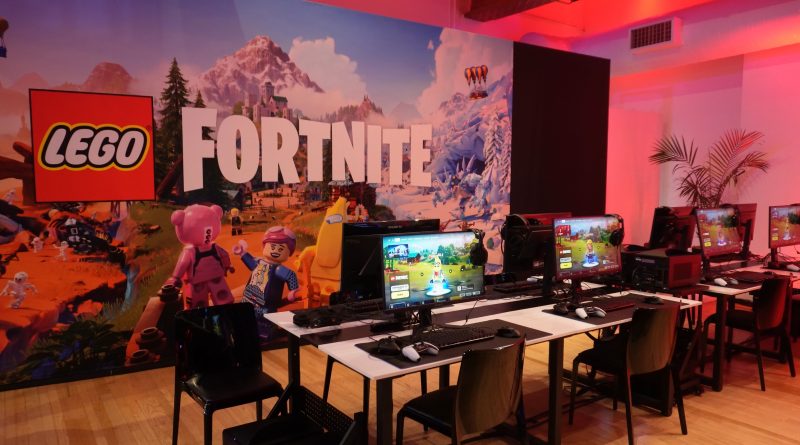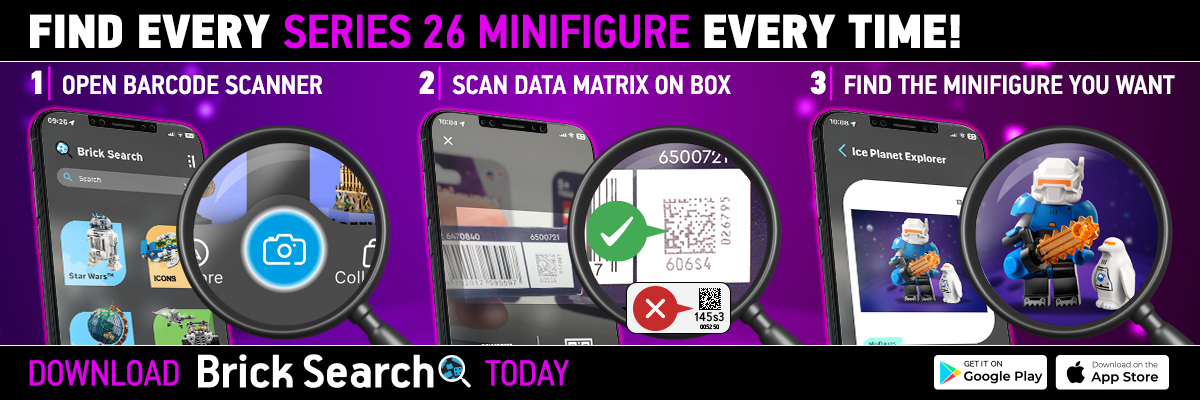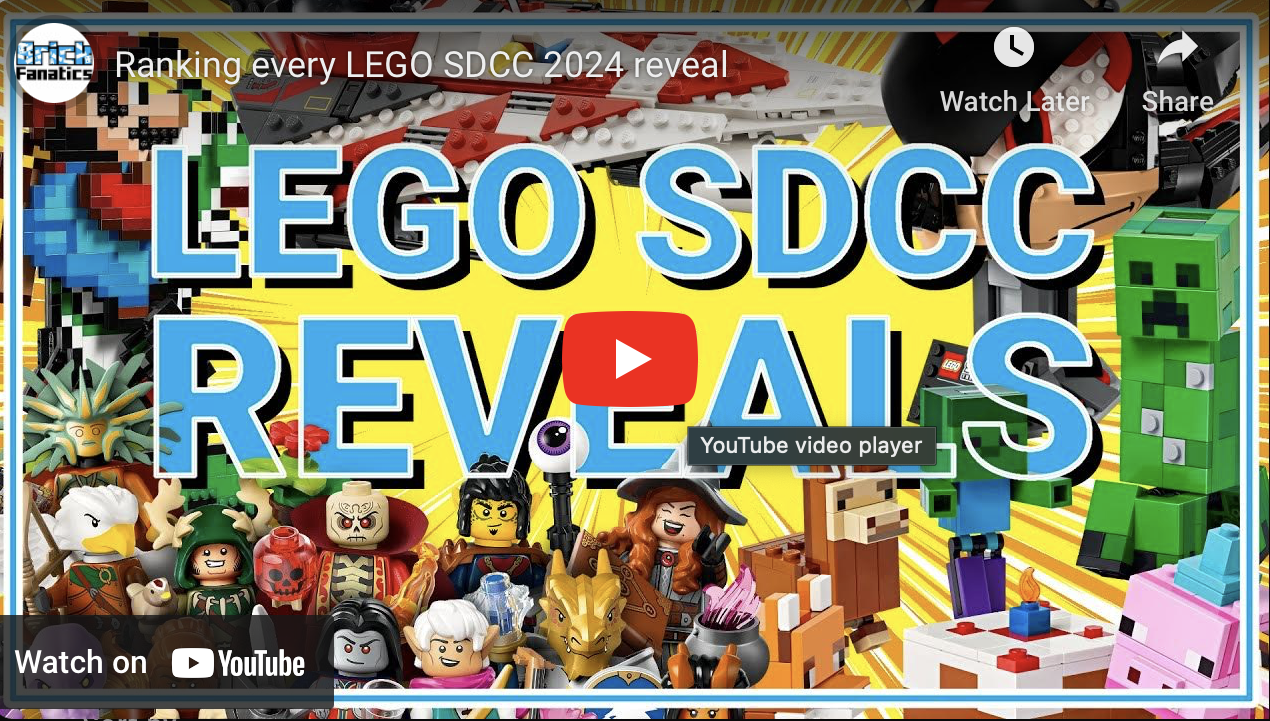Inside the secret LEGO Fortnite press reveal
From the Creative Director of Fortnite’s surprise LEGO obsession to the chances of getting physical sets, here’s everything we learned from going hands-on with LEGO Fortnite…
“Fortnite is the canvas and LEGO is the paint.”
This phrase was the unofficial motto for a recent event in New York City at which Brick Fanatics got an early look at the new collaboration between Epic Games and the LEGO Group. While the event was billed as an opportunity to get hands-on with LEGO Fortnite, by far the most fascinating part of the entire experience was getting the chance to speak candidly with Eric Williamson, Creative Director on LEGO Fortnite.
Hidden away on a busy street in downtown Manhattan, Epic Games hosted a collection of journalists from around the world for a secret hands-on preview of the next evolution of Fortnite. The attendees were an eclectic group – the majority of guests were games journalists, used to these kinds of events and used to rubbing shoulders with game developers.
Approximately a third of the guests, though, were instead LEGO journalists and influencers. Grouped together for a series of presentations, a roundtable, and gameplay sessions, this group received by far the most attention from the LEGO Fortnite developers, who seemed particularly interested in winning our approval for reasons beyond simply selling the game.
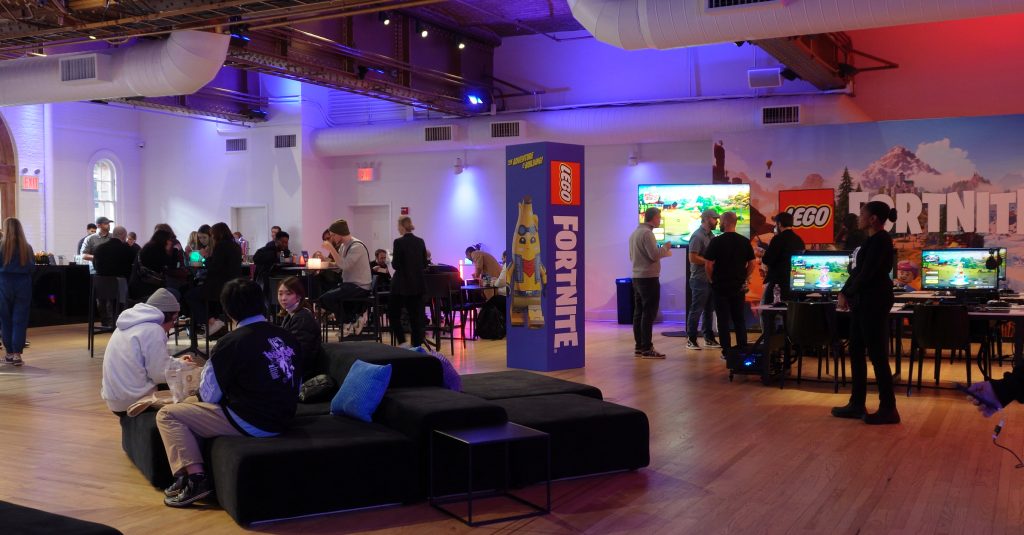
The event space was kitted out in style with posters, a smattering of PCs running Fortnite, and a big screen that showcased the game’s trailers. Most striking, though, was the enormous brick-built Fortnite Llama, which towered over everything else in the room. How this was transported through the venue’s significantly smaller doors is something of a mystery.
This being a LEGO event, there were, of course, LEGO bricks to play with, and guests were given the opportunity to participate in a Build-and-Take activity not unlike attending a LEGO store, with some colourful elements that could be assembled into a far smaller, more compact LEGO llama. But all of these decorations and the building activity were simply window dressing for the main event: a chance to play LEGO Fortnite a little early.
What was most interesting about this play session was the opportunity to explore the game alongside its developers, all of whom had some wild and wonderful ideas to show off; unique ways of approaching the game’s crafting system that they were more than happy to demonstrate.
In practice, LEGO Fortnite feels like Minecraft mixed with The Legend of Zelda: Tears of the Kingdom. Half the fun is in the game’s survival crafting gameplay and exploring a procedurally generated world; the other half is gluing together a bunch of volatile resources and seeing whether your inventions will fly, explode, or (as is most often the case) both.
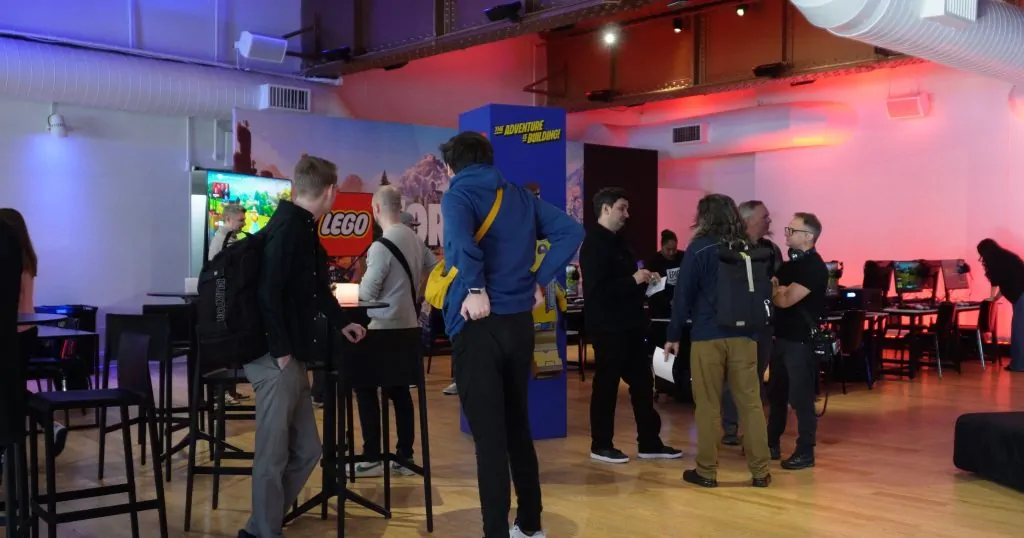
All of the developers in attendance were more than happy to share their own tips and tricks for constructing weird, cursed machines, and we were shown a gallery of some of the team’s favourite creations (there were a lot of flying restaurants, as apparently that’s what Epic employees like to make). But this is just the beginning: the expectation from Epic is that users will quickly find ways to perform feats of engineering beyond anything that the developers could have imagined.
It was this enthusiasm and excitement for LEGO fan involvement that really shone through across the entire event. This is not a game that’s been made for LEGO fans. This is the result of a bunch of avid LEGO fans using a staggering development budget to make exactly the LEGO game that they want to play.
If Epic Games has a secret weapon in its collaboration with the LEGO Group, that weapon is Eric Williamson. More so than any art asset or gameplay experience that was shown off at the event, Williamson’s presence – his enthusiasm, his earnest love of LEGO, and his eagerness to please a room full of particularly dedicated LEGO fans – made it very clear that LEGO Fortnite is in tremendously safe hands.
Williamson is not only one of the driving forces behind the phenomenal popularity of Fortnite: Battle Royale. He’s also a dyed-in-the-wool, incredibly passionate LEGO nerd; a self-described Adult Fan of LEGO who initially won over the LEGO Group by showing off his extensive collection of LEGO sets.
A story we heard several times at the event – both from Williamson and from the LEGO Group’s Chief Marketing Officer, Julia Goldin – involved an early Zoom call between the two companies. Apparently, Williamson picked the location for his call very well, as the LEGO Group’s representatives were impressed to see him sat in front of an enormous wall of LEGO sets; his own private collection.
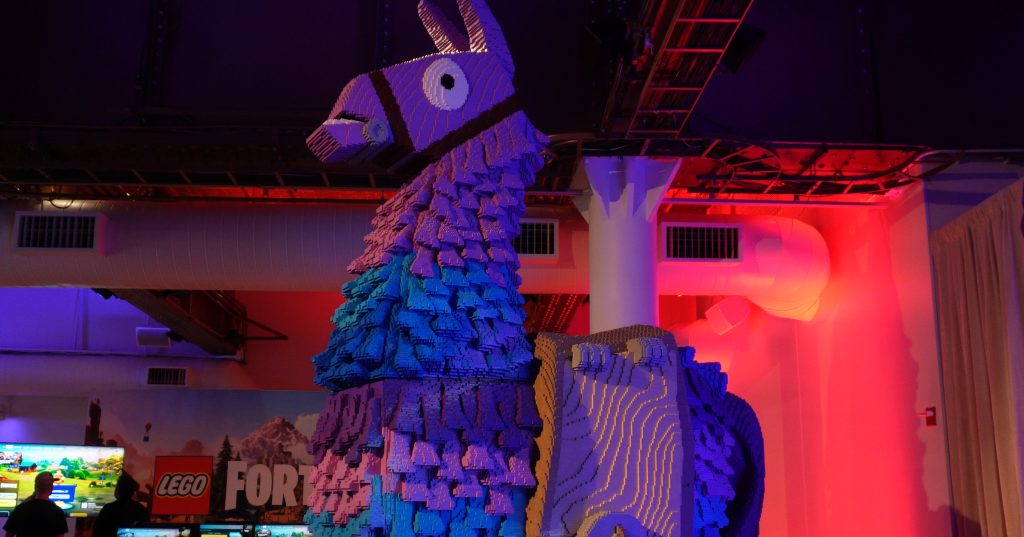
Williamson spent the entire event hovering at the shoulders of the LEGO fans in attendance. As big of a deal as he might be within the gaming world (and as someone who has significantly shaped Fortnite: Battle Royale, he is a pretty big deal), he seemed more than a little starstruck by the experience of being surrounded by a group of LEGO fan media representatives.
He couldn’t do enough to help us, to give us details of the game’s development, and – in a particularly unusual experience for those used to interviewing LEGO designers – to spill the beans on all of the processes of putting the game together and what might be coming in the future. LEGO designers are usually very good at sticking to the official line; knowing exactly what to say and no more about upcoming projects.
Not so with Williamson. He was absolutely thrilled to volunteer information about everything his team had made.
For example, he spoke at great length about how the scale for the game was difficult to pin down. The team had to figure out exactly how tall to make the in-game LEGO minifigures relative to the size of a standard Fortnite character model. This was further complicated by finding the right size for LEGO bricks within the world, and it involved designing and redesigning sections of the game over and over again.
According to Williamson, while the prospect of allowing players to place individual LEGO bricks, Minecraft style, would have been fun, doing so would have led to a serious drain on processing power. The game needed to run smoothly on various platforms and hardware, and as such, the decision was made to only allow players to build big chunks of pre-assembled, modular LEGO constructions, which is far less taxing on CPU (and a lot less tedious for players, given the focus on fast-paced building action).
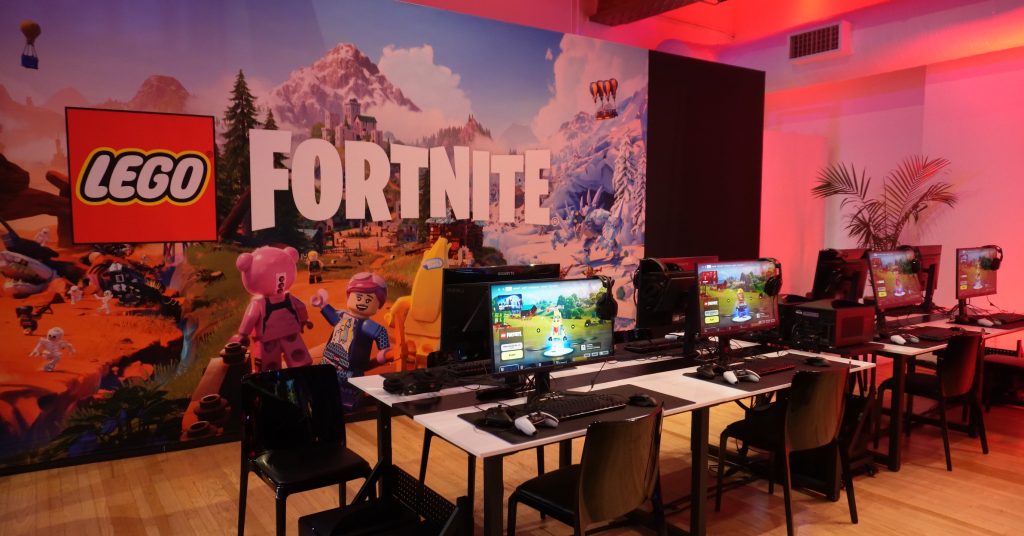
Beyond this, Williamson was tremendously eager to share his experiences meeting with the LEGO Group, visiting the company headquarters and the LEGO vault, and seeing some of his favourite childhood sets in sealed boxes.
He spoke about how the Fortnite developers had access to the entire colour palette of LEGO bricks in order to make the game look as accurate as possible, and this even meant being given certain LEGO elements in colours that are not commercially available (and which would probably go for a pretty penny on the aftermarket if they ever went missing).
Perhaps the most fascinating insight from the event involved discussion around what will come next for LEGO Fortnite. Not only was Williamson a little more relaxed than is usual for a LEGO product interview, the LEGO Group’s Julia Goldin was also happy to hint at where this collaboration may lead.
It was made very clear that the current, initial offering for LEGO Fortnite is merely the base experience – the vanilla game upon which subsequent updates will build. Talking about this, the developers (not just Williamson) spoke about how every future addition to the game will need to be able to interact perfectly with what has come before, and for that reason it’s important to establish a strong core at first before slowly adding more and more features and content.
To hear the developers talk, while they weren’t specifically using words like ‘elements’ and ‘system’, it did very much sound like they were describing the LEGO System design approach that fans know and love: a series of disparate parts designed to perfectly lock into place together, in a way that any piece from any era of the game’s history can work with every future piece.
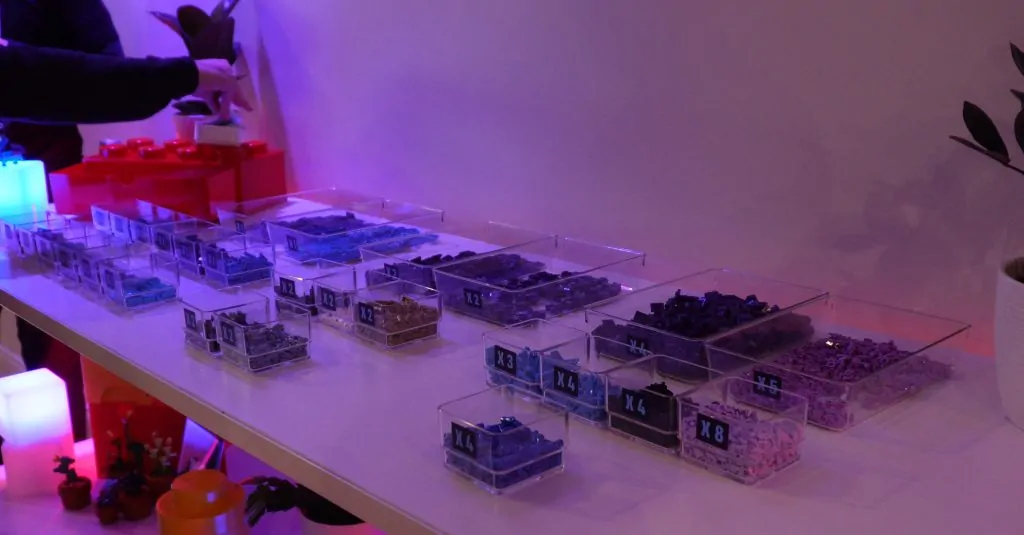
For anyone wondering whether LEGO Fortnite will aptly recreate the LEGO building experience, this is certainly something of a confirmation that Epic Games is going about things the right way.
When asked about how this collaboration could expand – both with more classic LEGO themes and iconography entering the game, and the potential for Fortnite LEGO sets, Goldin was surprisingly outspoken. Usually, the LEGO Group does not like to discuss what new LEGO sets might come in the near future, but Goldin said that she had anticipated both of these questions, and she was prepared with an answer.
“This collaboration has not been about, ‘why don’t we do something so we can create physical sets?’ – we don’t need that,” she explained. “We created it in order to open up the aperture; the opportunity for people to build in a very different way in a unique environment but still very true to the LEGO System of play. Having said that, as you know us, when something is super hot and the fans really want it in a physical set, we can make it happen.”
From Goldin’s comments it sounds like LEGO Fortnite is the latest in the LEGO Group’s many attempts to secure a foothold in the digital space. There was a lot of talk of the inevitability of children in particular choosing to play digitally rather than with physical toys. This is apparently a foregone conclusion, and as such the LEGO Group wants a piece of the digital pie.
Previous efforts to marry LEGO and screens have clearly all fallen short of the LEGO Group’s hopes in some way. There have been some fairly disastrous failures along the way (VIDIYO or LEGO Worlds, anyone?) and it seems that this partnership with Epic Games is very much about making LEGO an intrinsic part of a growing online ecosystem.

One thing that the LEGO Group and Epic apparently bonded over quickly was both companies’ strong interest in online child safety. This was mentioned multiple times across the day, to the point of redundancy.
Late last year, Epic Games agreed to pay a record $520m in fines to settle accusations from the FTC that – in the early days of Fortnite – it had used ‘manipulative techniques’ to trick kids into spending money unintentionally and illegally harvested children’s personal data. Since Fortnite launched in 2017, the company has implemented multiple safeguards to protect children’s privacy, including heightened parental controls and ‘cabined accounts’ that block features such as voice chat and microtransactions.
It’s perhaps no surprise, then, that Epic is going so heavy on its child safety messaging alongside the launch of LEGO Fortnite. The free-to-play, microtransaction-rich business model that supports the base game is exactly the kind of practice that many parents are terrified of when letting their children play games online, for fear that kids will accidentally ring up enormous credit card bills without understanding that all those V-Bucks have to come from somewhere.
What’s more, the content in a typical Battle Royale match is far from the squeaky clean image that the LEGO Group would want people to associate with its brand, and there’s likely a very good reason that a lot of elements from Battle Royale (most notably the guns) haven’t shown up in LEGO form just yet.
Given Epic’s sudden interest in providing very clearly-labelled parental guidance for different modes within Fortnite, it seems an awful lot like the LEGO Group expressed its concerns around child-appropriate content first, and Epic nodded vigorously and suddenly gained a newfound appreciation for child safety, but this may simply be a cynical reading based on a little too much enthusiastic parent-friendly marketing jargon bouncing around the room.
There was one word, though, which does make everything that Epic is doing make a lot more sense. To some it is a bit of a dirty word, not spoken in polite circles.
Epic Games’ Saxs Perrson, who is heavily involved in shaping Fortnite’s ecosystem, at one point dared to utter The M Word: ‘Metaverse’. LEGO Fortnite is but one small part of an attempt to turn Fortnite into more than just a game, but rather a hub for a variety of different gaming experiences.
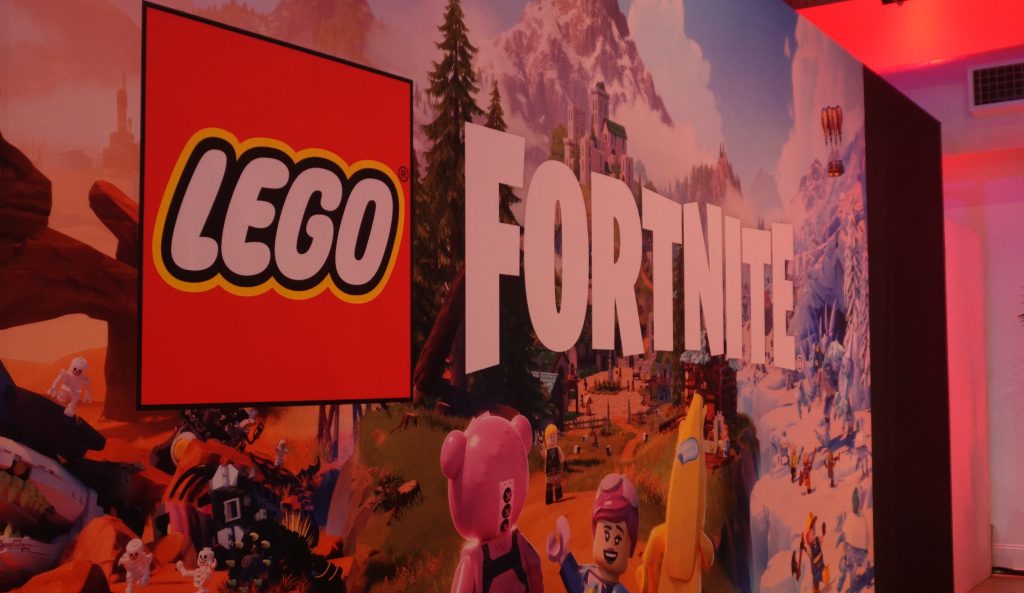
For those who are wondering why this new LEGO game is a mode within Fortnite rather than its own standalone experience, this provides something of an answer. Epic hopes to convince players to treat Fortnite like a shared online space, from which they can engage in a host of collaborative online experiences. Meanwhile, the LEGO Group seems to be convinced that Epic’s plans will work, that it is more valuable to be a heavily promoted chunk of content within Fortnite than it would be to have a standalone game.
Or, to put it another way, Fortnite is the canvas, LEGO is the paint.
This was the message that the entire event was designed to convey. In order to play LEGO Fortnite, you may not need to pay actual money (that comes later, once you’re hooked). You do, however, need to buy into the idea of a shared online space with its own games, music, social hub, and shops – all of which are controlled by Epic.
For some people this is going to be an easy adjustment to make: existing Fortnite fans who also love LEGO are getting exactly what they’ve always wanted. For the wider LEGO fanbase, though – those who love LEGO but who aren’t already squadded up on the Battle Bus – this might be a slightly tougher ecosystem to get used to. Which is presumably why it mattered so much to get LEGO fan media onboard nice and early…
The LEGO Fortnite game mode is live now across all platforms. Head here to check out the first gameplay trailer.
Support the work that Brick Fanatics does by purchasing your LEGO using our affiliate links.
Author Profile

- When I was a kid, my bus ride home from school featured a daily stop at LEGOLAND Windsor. The bus drove all the way up to the front gate, let eager tourists on and off, then drove back out of the park and on its merry way. Maybe if I’d got on a different bus every afternoon I’d have ended up with a proper job, but then, there’s no way of knowing for sure.
Latest entries
August 2024 sets13/07/2024LEGO Technic 42172 McLaren P1 review
Features10/07/2024‘90% NASA, 10% Disney’: hands-on with the latest LEGO Technic set at McLaren HQ
News01/06/2024LEGO BrickLink Designer Program 910038 Ominous Isle review
June 2024 sets16/05/2024LEGO Disney 43243 Simba the Lion King Cub review

